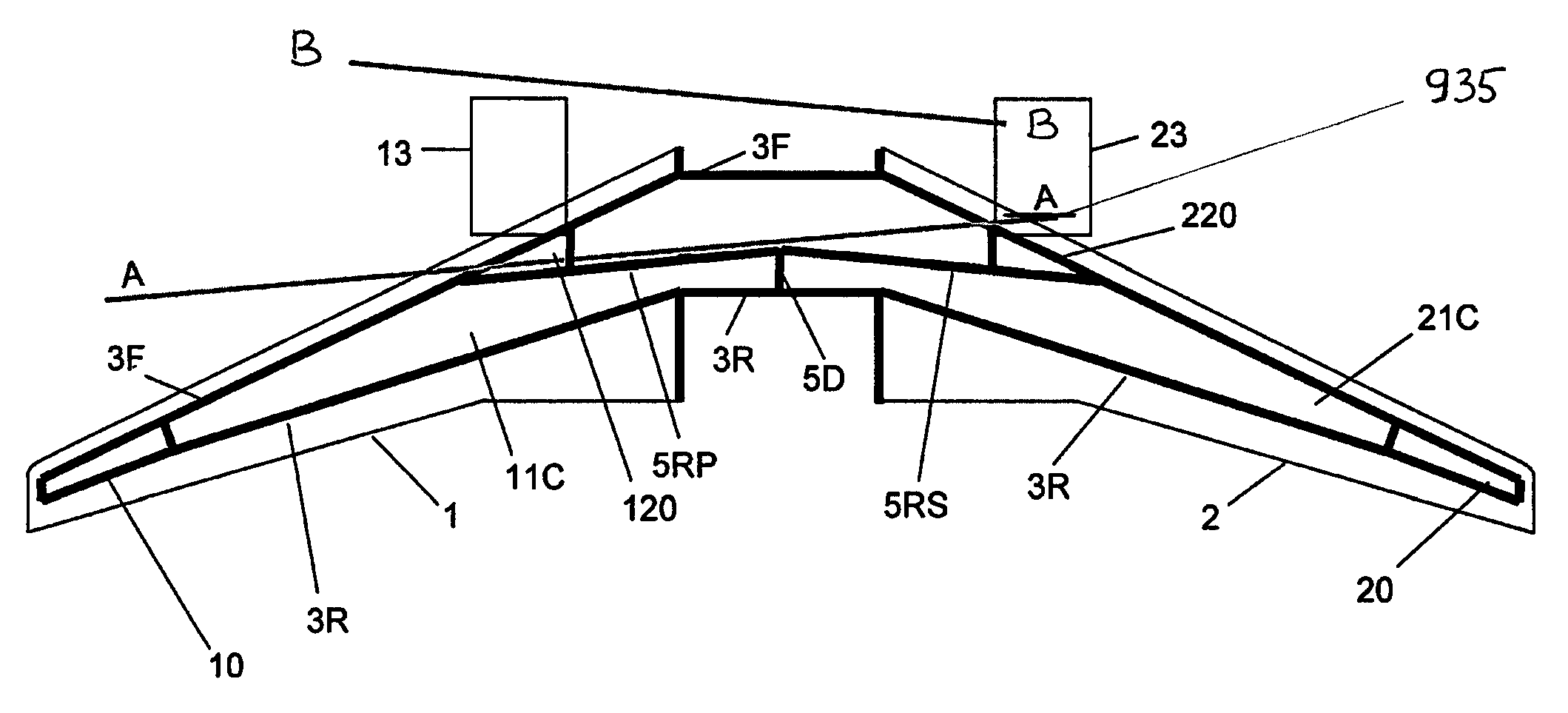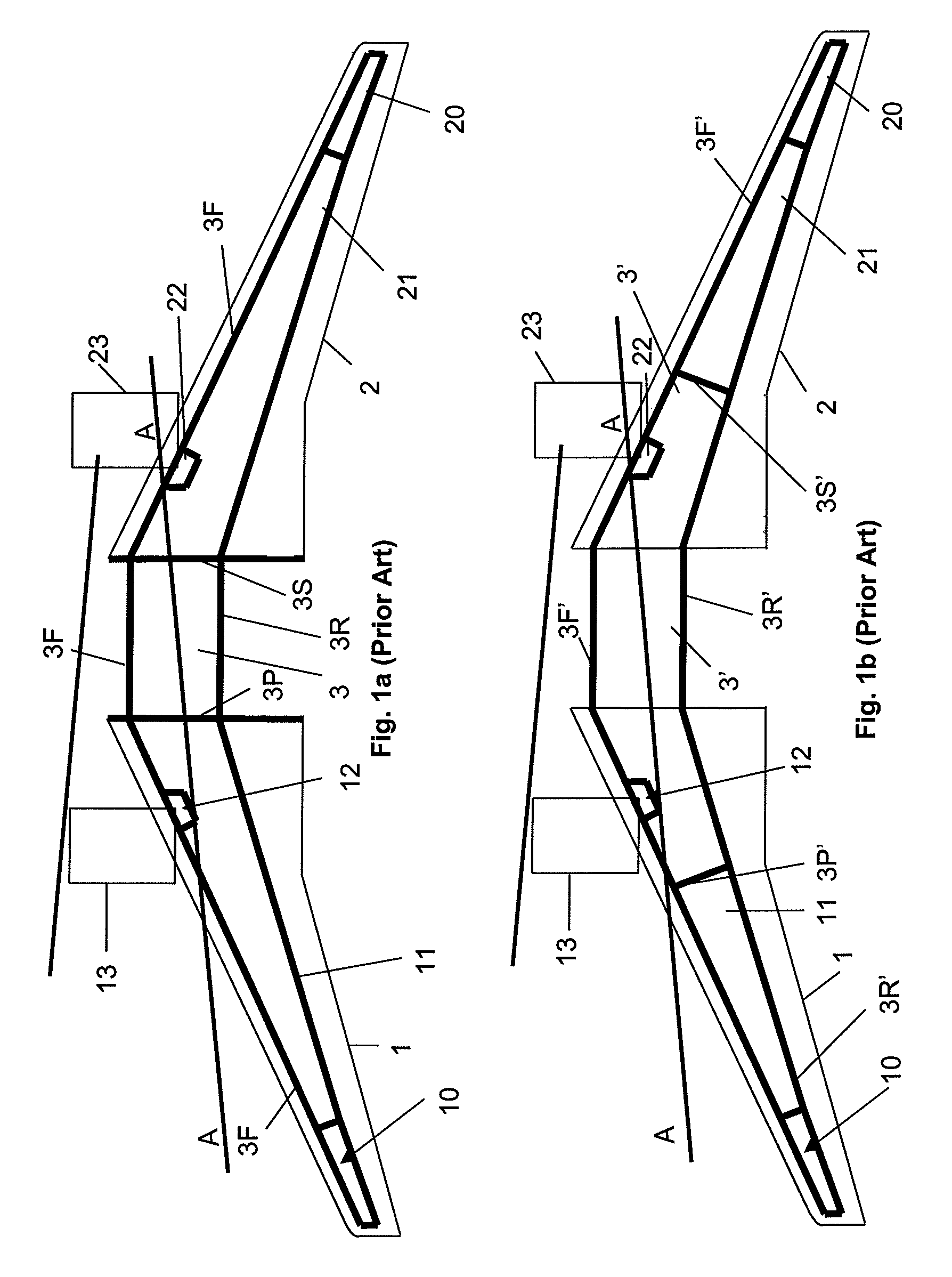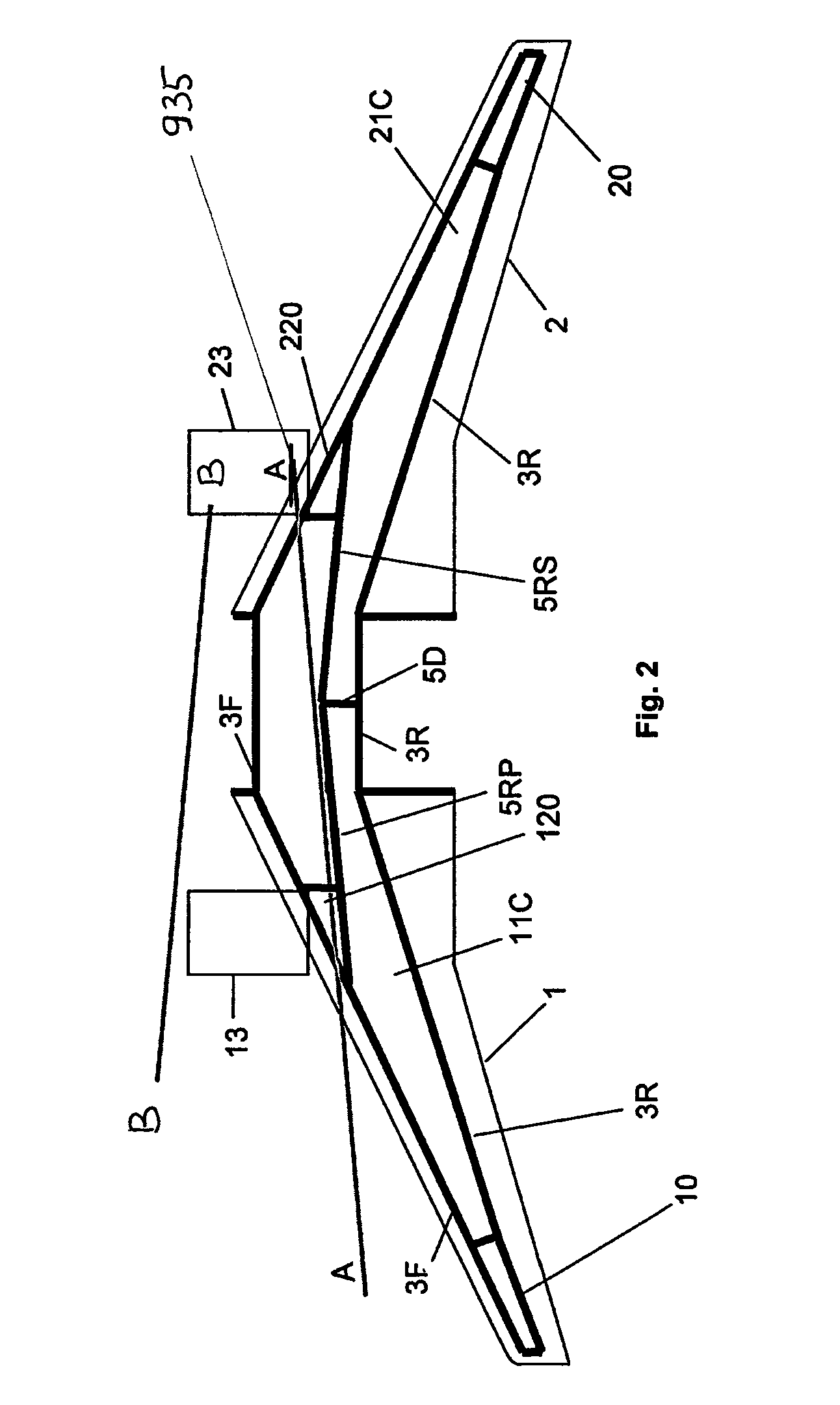Aircraft wings and fuel tanks
a technology for fuel tanks and aircraft wings, which is applied in the direction of aircraft control, aircraft power plants, aircraft components, etc., can solve the problems of aircraft being unable to reach, aircraft may be unable to penetrate the structure, aircraft may be unable to reach, and the loss of fuel from a fuel tank or tank is rapid, so as to achieve the effect of maximising the volume of fuel
- Summary
- Abstract
- Description
- Claims
- Application Information
AI Technical Summary
Benefits of technology
Problems solved by technology
Method used
Image
Examples
Embodiment Construction
[0052]In the following description and in the accompanying drawings various reference numerals include the letters F, R, P, S & T; these letters are used generally to denote, respectively, front, rear, port, starboard and transverse.
[0053]FIG. 1a shows a first configuration for fuel tanks in an aircraft wing assembly of the prior art. The assembly includes a central wing element, a port wing 1 and a starboard wing 2. Accommodated in the wing are various tanks including a central fuel tank 3, a port vent tank 10, a port inner tank 11, a starboard vent tank 20 and a starboard inner tank 21. The position occupied by a port engine is indicated as 13 and the position occupied by a starboard engine is indicated as 23. A port dry bay 12 occupies a position adjacent to the position 13 of the port engine and a starboard dry bay 22 occupies a position adjacent to the position 23 of the starboard engine.
[0054]The central fuel tank 3 is defined by a front boundary member 3F extending to the fro...
PUM
 Login to View More
Login to View More Abstract
Description
Claims
Application Information
 Login to View More
Login to View More - R&D
- Intellectual Property
- Life Sciences
- Materials
- Tech Scout
- Unparalleled Data Quality
- Higher Quality Content
- 60% Fewer Hallucinations
Browse by: Latest US Patents, China's latest patents, Technical Efficacy Thesaurus, Application Domain, Technology Topic, Popular Technical Reports.
© 2025 PatSnap. All rights reserved.Legal|Privacy policy|Modern Slavery Act Transparency Statement|Sitemap|About US| Contact US: help@patsnap.com



